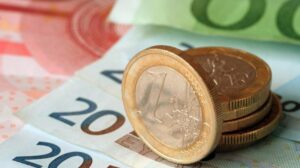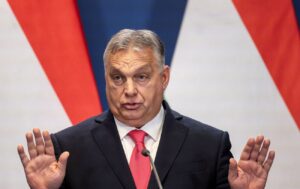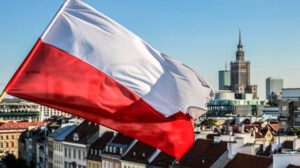
In the first 10 months of 2025, Ukraine exported 36,400 tons of honey worth over $84 million, with more than 70% going to European Union countries, Deputy Minister of Economy, Environment, and Agriculture Taras Vysotsky said during a forum on the European integration of Ukraine’s honey sector.
He noted that Ukraine is traditionally among the top five global honey exporters, continuing to develop beekeeping even in the difficult conditions of war.
“Ukraine is one of the leaders in honey exports to the EU. This testifies to the high quality, trustworthiness, and competitiveness of our products. The development of digital tools, modernization of production, and strengthening of quality control are gradually creating conditions for scaling exports not only to the EU but also to the markets of Asia and the Middle East,” he wrote on Facebook.
At the same time, Vysotsky stressed that Ukraine should ensure full compliance with EU standards and improve production traceability: clearly record where the honey comes from, which apiaries produced it, and how its quality was checked. This approach will open up new and long-term market opportunities for Ukrainian beekeepers.
According to Vysotsky, there are currently 62,697 apiaries and over 2.84 million bee colonies in the Apiary Passport Register.
“According to experts, integration into the EU market could increase Ukrainian honey exports by 25-30% in the next three years. Our task is to do everything possible to make this forecast a reality,” the deputy minister concluded.

According to Serbian Economist, the average annual salary of full-time employees in the EU in 2024 was €39,800, which is 5.2% higher than in 2023, according to Eurostat.
The highest average salaries were recorded in Luxembourg (€82,969), Denmark (€71,565), and Ireland (€61,051).
The lowest figures were in Bulgaria (€15,387), Greece (€17,954), and Hungary (€18,461).
The full list for EU countries in 2024 is as follows:
Luxembourg — €82,969;
Denmark — €71,565;
Ireland — 61,051;
Belgium — 59,632;
Austria — 58,600;
Germany — 53,791;
Finland — 49,428;
Sweden — 46,525;
France — 43,790;
Slovenia — 35,133;
Spain — 33,700;
Italy — 33,523;
Malta — 33,499;
Lithuania — 29,104;
Cyprus — 27,611;
Estonia — 26,546;
Portugal — 24,818;
Czech Republic — 23,998;
Croatia — 23,446;
Latvia — 22,262;
Poland — 21,246;
Romania — 21,108;
Slovakia — 20,287;
Hungary — 18,461;
Greece — 17,954;
Bulgaria — 15,387.
https://t.me/relocationrs/1760

Hungarian Prime Minister Viktor Orbán announced that his government will not comply with the EU Migration and Asylum Pact and does not intend to accept migrants under relocation schemes. “As long as there is a patriotic government in Hungary, we will not implement the migration pact. We will not accept migrants and will not spend a cent on them,” Orbán wrote on Twitter on Wednesday.
The statement came amid the European Commission’s initiative to relocate asylum seekers from the countries under the most pressure — Spain, Italy, Greece, and Cyprus — to other EU states.
A number of countries, including Hungary, Poland, and Slovakia, have opposed participation in this scheme.
Orbán has repeatedly criticized pan-European mechanisms for distributing migrants and threatened to sue the European Commission if mandatory resettlement quotas are imposed.

The Polish Ministry of Internal Affairs and Administration has submitted an application to the European Commission for complete exemption from the solidarity mechanism under the migration pact, the ministry’s press service reported on Wednesday.
“For months, we have been stating our disagreement with any resettlement mechanisms. Poland incurs enormous costs to protect the European Union’s borders, faces migration pressure from Belarus, and accepts military refugees from Ukraine. It is important to note that the decision to submit such an application means protection for many years, not just one. We announced this and kept our word,” commented Polish Interior Minister Marcin Kerwinski, quoted by the ministry’s press service.
Earlier, Polish Prime Minister Donald Tusk said that the country would definitively refuse to implement the EU migration pact. President Karol Nawrocki and Foreign Minister Marcin Kerwinski also announced their intention to oppose the implementation of the EU migration pact in Poland.
As reported, the Polish-Belarusian border has suspended the acceptance of applications from foreigners for international protection. The relevant resolution of the Polish government, valid for 60 days, came into force on March 27, 2025, and was subsequently extended by the Sejm.
Source: http://relocation.com.ua/poland-plans-to-withdraw-from-the-eu-migration-pact/

In September 2025, EU countries adopted 79,205 new decisions to grant temporary protection to non-EU citizens who fled Ukraine as a result of Russian aggression, which is 49% more than in August 2025 and is the highest monthly average of new decisions recorded since August 2023.
“This increase came after the Ukrainian government adopted a decree at the end of August 2025 granting men aged 18 to 22 inclusive the right to leave Ukraine without hindrance,” Eurostat reported on its website on Monday.
According to its data, compared to the end of August 2025, the total number of people from Ukraine under temporary protection increased by 49,560 (+1.2%) to 4,302,160 at the end of September.
In its statistics for August, the agency reported a higher total figure of 4,373,460, but this included data from Portugal and Luxembourg, where there were 65,120 and 3,880 refugees from Ukraine with the corresponding status, respectively.
It is noted that in September, according to available data, the number of people under temporary protection increased in 24 EU countries. The largest absolute increase was recorded in Poland (+12,960; +1.3%), Germany (+7,585; +0.6%) and the Czech Republic (+3,455; +0.9%), while the only decrease was in France (-240; -0.4%).
According to Eurostat data, Germany remains the country with the largest number of refugees from Ukraine in the EU and the world – 1 million 218.1 thousand, or 28.3% of the total number of beneficiaries in the EU.
The top three also include Poland with 1 million 8,890, or 23.5%, and the Czech Republic with 389,310, or 9.0%. Spain with 244,170 and Romania with 192,840 follow with a significant gap.
Eurostat clarified that the data for Spain, Greece, and Cyprus includes some people whose temporary protection status is no longer valid.
According to the agency’s data, compared to the population of each EU member state, the highest number of temporary protection beneficiaries per thousand people at the end of September 2025 was observed in the Czech Republic (35.7), Poland (27.6), and Latvia (25.5), while the corresponding figure at the EU level is 9.6.
It is also noted that as of the end of September 2025, Ukrainian citizens accounted for more than 98.4% of temporary protection beneficiaries. Adult women accounted for 44% of temporary protection recipients in the EU, children for almost a third (31.0%), while adult men accounted for about a quarter (25.1%) of the total. A year earlier, women accounted for 45%, children for 32.3%, and adult men for 22.7%, while at the end of September 2023, adult women accounted for 46.5%, children for 33.7%, and adult men for 19.9%.
At the end of September 2025, there were also more than 100,000 people with temporary protection status in Slovakia (135,770), the Netherlands (130,500), and Ireland (116,350).
Between 50,000 and 100,000 were in Belgium (93,030), Austria (88,860), Norway (80,920), Finland (76,470), Bulgaria (73,200), Switzerland (70,520), and France (54,490) (data on children in France is mostly not included – Eurostat).
Next are Lithuania – 49.32 thousand, Sweden – 47.33 thousand, Denmark – 44.50 thousand, Hungary – 42.01 thousand, Greece – 37.41 thousand, Estonia – 34.96 thousand, Latvia – 31,150, Croatia – 27,840, Cyprus – 24,680, Iceland – 4,000 (data as of the end of February), Malta – 2,390, and Liechtenstein – 0,780.
Eurostat clarified that all data provided relates to the granting of temporary protection on the basis of EU Council Decision 2022/382 of March 4, 2022, which establishes the existence of a mass influx of displaced persons from Ukraine in connection with Russia’s military invasion and entails the introduction of temporary protection. On June 25, 2024, the European Council decided to extend temporary protection for these persons from March 4, 2026, to March 4, 2027.
According to updated UNHCR data, the number of Ukrainian refugees in Europe as of October 3, 2025, was estimated at 5.192 million (5.138 million as of September 2), and 5.753 million (5.696 million) worldwide.
In Ukraine itself, according to the latest UN data for July this year, there are 3.340 million internally displaced persons (IDPs), compared to 3.757 million in April.
As Serhiy Sobolev, then Deputy Minister of Economy, noted in early March 2023, the return of every 100,000 Ukrainians home results in a 0.5% increase in GDP.
In its July inflation report, the National Bank of Ukraine worsened its migration forecast: while in April it expected a net inflow of 0.2 million people to Ukraine in 2026, it now forecasts a net outflow of 0.2 million, which corresponds to the estimate of the net outflow this year.
“Net return will only begin in 2027 (about 0.1 million people, compared to 0.5 million in the previous forecast),” the NBU added, confirming this forecast at the end of October.
In absolute terms, the National Bank estimates the number of migrants currently remaining abroad at about 5.8 million.
Source: http://relocation.com.ua/in-september-the-eu-accepted-almost-80000-refugees-from-ukraine/

IMK Agricultural Holding supplies about 20% of agricultural products to the European Union market during 2022-2024 and 2025 and therefore depends on the European market and insights that it applies in practice, despite constant shelling and losses due to the war, said its CEO Oleksandr Verzhikhovsky.
“If we talk about the export of our products and take a look at 2022-2023-2024 and the current 2025, then about 20% of our exports went to the European market. These were mainly wheat and corn. We export 600,000 tons annually, and about 20% of that traditionally goes to the European market,” he said at a conference during the Agritechnika-2025 exhibition in Hanover, Germany.
Verzhikhovsky added that at the same time, there is a clear downward trend in the share of products supplied to the European market.
At the same time, he acknowledged that IMC depends on imports from the EU for all components of its agribusiness: fertilizers, plant protection products, and equipment.
“In fact, we are preparing to join the European community — in fact, for us, there is no alternative. We are preparing within the framework of the Smart Green Strategy, approved for 10 years until 2033. It is aimed at preparing for the high environmental standards dictated by the European market,” said the CEO of the agricultural holding.
The agroholding’s Smart Green Strategy aims to make agribusiness more environmentally friendly, which is an additional bonus to increasing efficiency. As an example, he cited the abandonment of plowing in the Poltava region due to the need to preserve moisture in the soil and reduce the carbon footprint.
Verzhikhovsky added that it is difficult to talk about further prospects at the moment due to the military actions in the regions where IMC operates.
According to him, it is extremely difficult to work due to constant power outages caused by Russian shelling of the Ukrainian power grid. IMC was forced to suspend grain drying due to a fire in the dryer after the shelling. In addition, a few weeks ago, as a result of a drone attack, the agricultural holding lost 200 cubic meters of diesel fuel at its enterprise in the Chernihiv region.
“Of course, we are moving forward with the Smart Green Strategy to implement the ‘green agenda’, but in between problems and the need to solve more urgent and routine issues imposed on us by the situation in which Ukraine lives and works,” summarized the SEO of IMC.
As reported, Alex Lissitsa, advisor to the directors of the agricultural holding, said that IMC will not launch new investment projects in 2026, but will allocate about $25 million to upgrade its equipment.
IMK Agroholding is an integrated group of companies operating in the Sumy, Poltava, and Chernihiv regions (northern and central Ukraine) in the segments of crop production, elevators, and warehouses. The land bank is 116,000 hectares, storage capacity is 554,000 tons, and the 2024 harvest is 864,000 tons.
IMK ended 2024 with a net profit of $54.54 million, compared to a net loss of $21.03 million in 2023. Revenue grew by 52% to $211.29 million, gross profit quadrupled to $109.10 million, and normalized EBITDA increased 25-fold to $86.11 million.